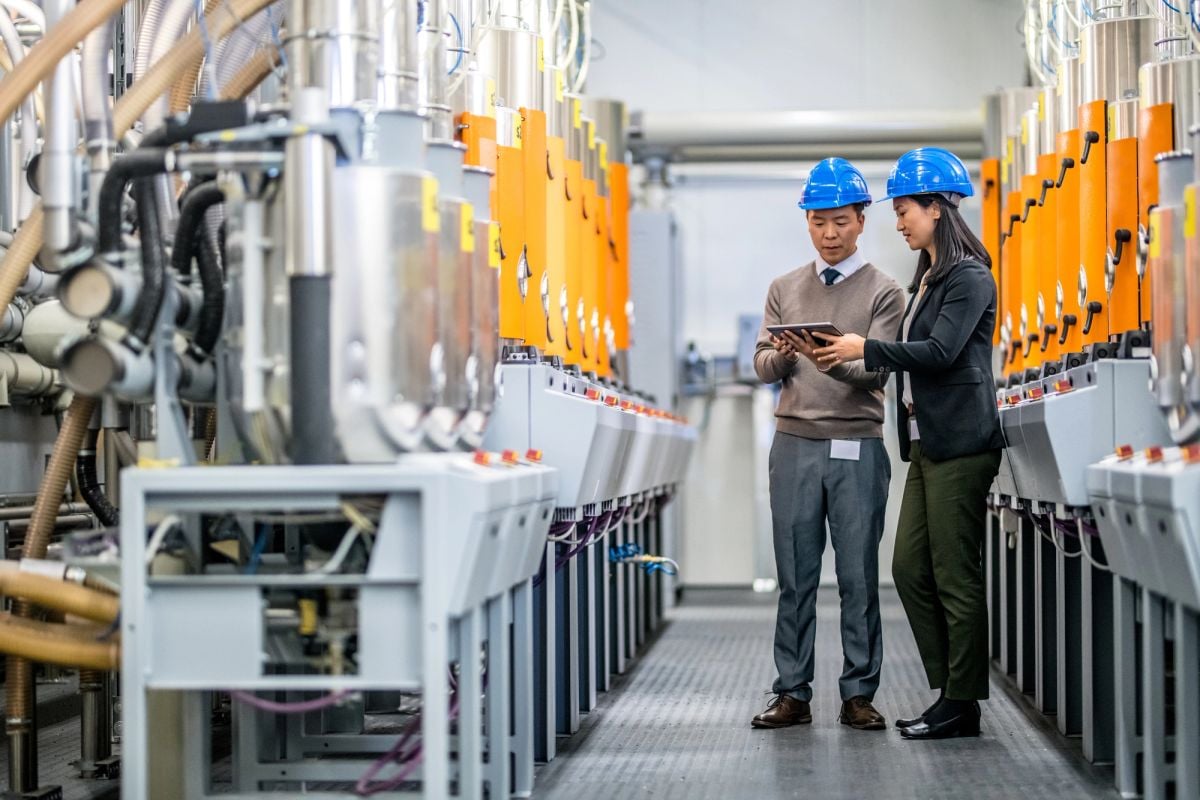A Guide to Multi-Effect Evaporators
When it comes to industrial processes and resource optimisation, multi-effect evaporators emerge as indispensable tools, playing a pivotal role in achieving enhanced efficiency and sustainable operations.
This article delves into the workings of multi-effect evaporators, exploring their common applications and the subsequent effects that make them indispensable in various industries.
As industries strive for more sustainable and cost-effective solutions, understanding the nuanced concepts of heat transfer coefficient, heat loss, and the role of heating mediums becomes crucial in unlocking the full potential of multi-effect evaporators.
Read on as we discuss the fundamental principles of this technology, and unravel how it stands as a cornerstone in optimising industrial processes and minimising resource wastage.
What are Multi-effect evaporators?
Multiple-effect evaporator systems (typically double-effect evaporators or triple-effect evaporators) are a common type of evaporator that uses heat from steam in multiple evaporator bodies to increase energy efficiency and reduce energy consumption.
Multiple effect evaporators are usually made up of 2 or 3 successive effects, which increases steam economy.
Systems with one effect are known as single effect evaporators, while those with two successive effects are called double-effect evaporators. Triple effect evaporators are those with three successive effects.
In this blog post, we will discuss the working principle, benefits, and applications of evaporators with additional effects.
What is the process of evaporation?
Evaporation involves the removal of hot water or solvents from a liquid via heat transfer.
The evaporation process has a wide industrial application, including across the food and beverage industry (including the dairy industry), the pharmaceutical industry, and in chemicals and environmental sectors.
It serves as a fundamental technique for separating substances and producing a concentrated solution.
Principle of Multi-Effect Evaporators
The basic principle of multi-effect evaporators is to use the heat generated by the condensation of the vapour in one stage to evaporate the liquid in the next stage. In other words, they maximise the use of heating steam by converting it into vapour efficiently.
In a multi-effect evaporator, there are two or more evaporator stages, each operating at a different pressure and temperature.
The evaporator stages are connected in a series, with the vapour from the previous stage being used as the heat source for the next stage.
The feed liquid is introduced into the first stage, where it is heated by the vapour from the subsequent effect.
The liquid then boils and evaporates, forming vapour that is sent to the next stage, where it is condensed and used as the heating source for the following stage.
This process of condensing the latent heat source continues until the desired concentrated liquid is achieved, and the final product is obtained.
Benefits of Multiple-Effect Evaporation
Among industrial evaporators, multiple-effect evaporation has many advantages over single-effect evaporation systems. Some of the key benefits are:
- Superior energy efficiency: By utilising the heating steam generated in one stage to power the evaporation rate in subsequent stages, it achieves a cascading effect that enhances thermal efficiency. This design results in a significant reduction in overall energy consumption, while also minimising waste heat.
- Reduced operating costs: Due to the lower energy consumption, multi-effect evaporators have lower operating costs than single-effect evaporators, making them a cost-effective solution for businesses.
- High ratio of concentrated product: Multi-effect evaporators can achieve higher concentration ratios than single-effect evaporators, which means that they can produce a more concentrated liquid. A more concentrated solution ensures optimal use of resources.
- Compact design: Multi-effect evaporators have a compact design and take up less space than single-effect evaporators. This efficient design makes them ideal for small plants.
Common Applications of Multi-Effect Evaporators
Multi-effect evaporators play a pivotal role in many evaporation plants across many industries due to their efficiency and versatility.
In the food and beverage sector, these evaporators are instrumental in producing a wide range of products. Specifically, they facilitate the concentration of fruit juices, enabling manufacturers to achieve desired consistency and flavor profiles.
Additionally, in the dairy industry, they contribute to the production of specific dairy products - condensed milk, cheese, and other dairy derivatives - by eliminating excess water content efficiently.
Such concentrated foods have several benefits for the dairy industry, including increased shelf life, reduced weight, reduced storage costs, and reduced transportation costs. All of these make a huge difference to the type of product it's viable for manufacturers in the dairy industry to produce.
The chemical industry benefits immensely from multi-effect evaporators. They are integral in the synthesis and processing of various chemicals.
Whether it's the production of potent acids, essential alkalis, or vital solvents, these evaporators ensure precise concentration ratios and purity, meeting stringent industry standards.
Within the pharmaceutical industry, multi-effect evaporators are indispensable. They aid in the creation of crucial pharmaceutical products like antibiotics, vitamins, and hormones. By facilitating the removal of solvents and concentrating active ingredients, these devices ensure the efficacy and safety of medicinal products.
Moreover, in the environmental sector, multi-effect evaporators serve a vital role in sustainability efforts. They are employed in wastewater treatment processes, efficiently removing contaminants and pollutants.
Mulit-effect evaporators facilitate the recovery of valuable materials during industrial wastewater treatment, resulting in reduced liquid discharge, which promotes resource conservation.
The use of multi effect evaporation in wastewater treatment is used across multiple industries for this reason.
Multi-effect evaporators cater to diverse industry needs. Their multifaceted applications underscore their significance in modern industrial operations.
How to increase the efficiency of a multi effect evaporator?
- Optimising the heat transfer rate can be achieved by ensuring that the evaporator surfaces are clean and free from fouling or scaling.
- Using a high-performance vacuum system can reduce the boiling temperature, which in turn reduces energy consumption.
- Controlling the rate of feed liquid and the boiling temperature can help ensure that the evaporator operates within its design limits. Know your boiling point rise, also called boiling point elevation. This is the difference between a solution's boiling point and the boiling point of water at the same pressure.
- Utilising the condensate from the previous effect as the feed for the next effect can further reduce energy consumption. By implementing these strategies, operators can significantly improve the efficiency of their multiple-effect evaporator systems, resulting in cost savings and increased productivity.
Conclusion
The significance of multi-effect evaporators in industrial settings cannot be overstated, as they prove to be instrumental in optimising evaporation processes with their compact design and efficient utilisation of heat transfer coefficients.
As industries seek to streamline operations and mitigate energy costs, the nuanced understanding of factors such as heat loss, boiling temperature, and the form of steam generated becomes ever-important.
How can your organisation leverage the efficiency gains offered by multi-effect evaporators to enhance its sustainability and cost-effectiveness?
Find out more about the strategies for achieving scalable decarbonisation by downloading our comprehensive report, Demystifying Decarbonisation.
This report provides valuable insights into the many solutions available for large businesses that want to cut carbon emissions rapidly and efficiently. Explore the report and take a proactive step toward a net zero future.





